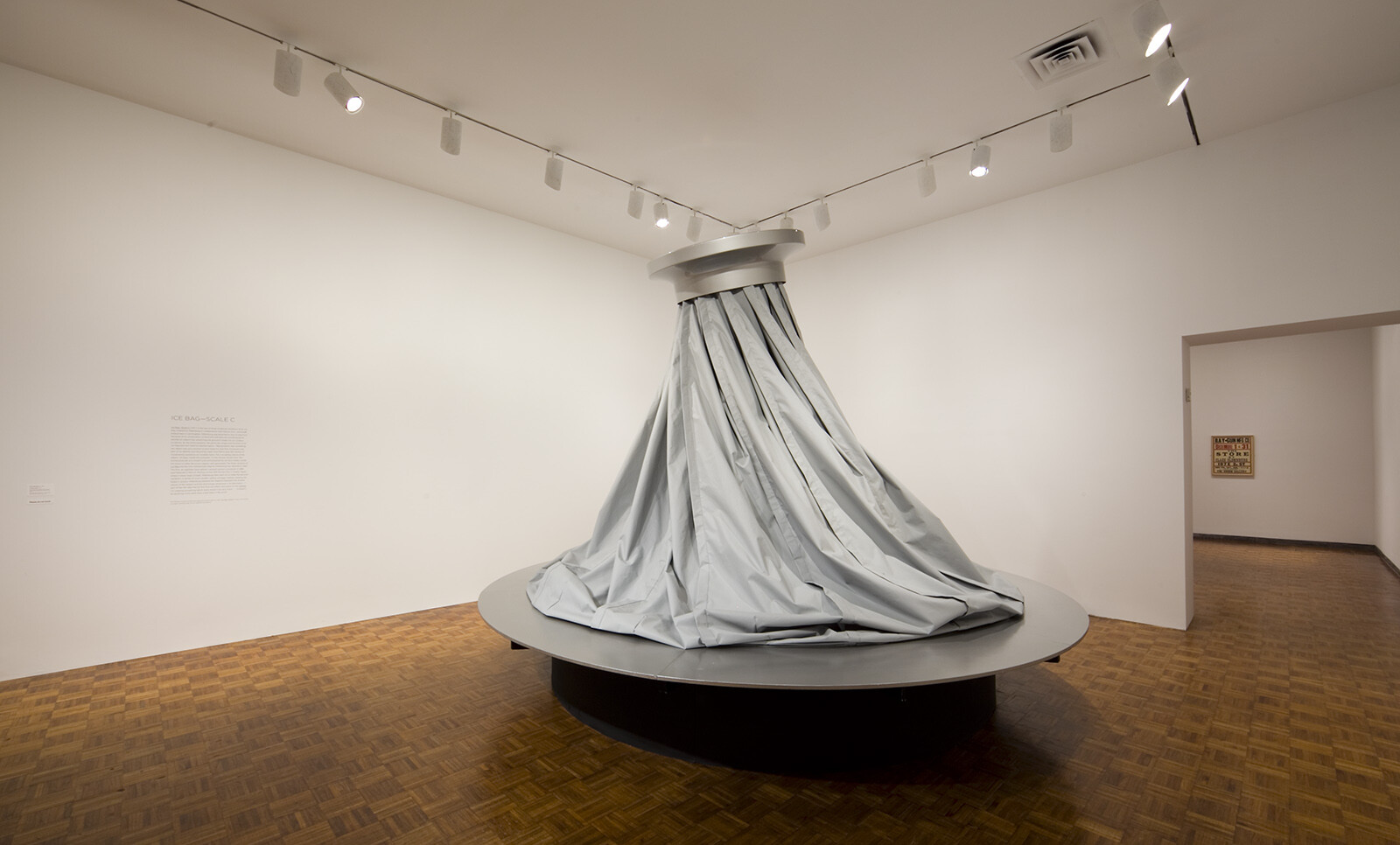Conserving Claes Oldenburg's Ice Bag- Scale C, 1971
June 17, 2013
In this video, Whitney curator Dana Miller, conservator Eleanora Nagy, and artist Claes Oldenburg discuss the conservation process of Oldenburg’s Ice Bag- Scale C, 1971. Also included is commentary by the team of specialists who assisted in the restoration including a hi-fi engineer, an electrician, an auto body restorer, and a custom fabric designer.
Claes Oldenburg: I’m Claes Oldenburg. I’m here to make a few comments about the work called the Ice Bag, this 12-footer, the third one made in a series, some years ago. It’s a little bit out-of-date, the ice bag, like many of the objects I’ve used. I guess my familiarity with ice bags goes back to probably college when I was curing hangovers and stuff like that. So that would be 1950. I wanted to make the movement very limited. I wanted to make it something like a low-level creature that didn’t do very much. It twists one way, then another way. And then it inflates when air is pumped into it. And then it deflates. So it relaxes, it pumps up, and it turns. It’s a pleasure I think to watch this simple movement in what you ordinarily think of as something that doesn’t move. When you look at it from the outside, you don’t see all the little things that are making it work. It’s sort of like a human being in that respect. Of course when you make something soft, you do associate it with the flesh. The ice bag is accustomed to being connected to the flesh by putting it on the head, and so on, or any part of the body. So it definitely has a relationship to that. I think that when it’s in its movement, it gives an uncanny sense of being alive that makes you almost dizzy because you know it’s not alive and yet, it certainly looks alive. And that is part of its magic effect.



